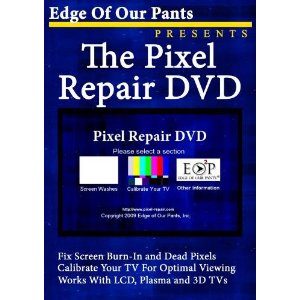
What is a printer?
In computing, a printer is a peripheral which produces a text or graphics of documents stored in electronic form, usually on physical print media such as paper or transparencies. Many printers are primarily used as local peripherals, and are attached by a printer cable or, in most new printers, a USB cable to a computer which serves as a document source. Some printers, commonly known as network printers, have built-in network interfaces, typically wireless or Ethernet based, and can serve as a hard copy device for any user on the network. Individual printers are often designed to support both local and network connected users at the same time. In addition, a few modern printers can directly interface to electronic media such as memory cards, or to image capture devices such as digital cameras and scanners; some printers are combined with scanners or fax machines in a single unit, and can function as photocopiers. Printers that include non-printing features are sometimes called multifunction printers (MFP), multi-function devices (MFD), or all-in-one (AIO) printers. Most MFPs include printing, scanning, and copying among their many features. (Source: Wikipedia)
Simply put, a printer is a device that prints text or illustrations on paper.
Printers are also classified based on the following characteristics:
•quality of type: The output produced by printers is said to be either letter quality (as good as a typewriter), near letter quality, or draft quality. Only daisy-wheel, ink-jet, and laser printers produce letter-quality type. Some dot-matrix printers claim letter-quality print, but if you look closely, you can see the difference.
•speed: Measured in characters per second (cps) or pages per minute (ppm), the speed of printers varies widely. Daisy-wheel printers tend to be the slowest, printing about 30 cps. Line printers are fastest (up to 3,000 lines per minute). Dot-matrix printers can print up to 500 cps, and laser printers range from about 4 to 20 text pages per minute.
•impact or non-impact: Impact printers include all printers that work by striking an ink ribbon. Daisy-wheel, dot-matrix, and line printers are impact printers. Non-impact printers include laser printers and ink-jet printers. The important difference between impact and non-impact printers is that impact printers are much noisier.
•graphics: Some printers (daisy-wheel and line printers) can print only text. Other printers can print both text and graphics.
•fonts : Some printers, notably dot-matrix printers, are limited to one or a few fonts. In contrast, laser and ink-jet printers are capable of printing an almost unlimited variety of fonts. Daisy-wheel printers can also print different fonts, but you need to change the daisy wheel, making it difficult to mix fonts in the same document.
ONLY $4.99 USD!
Click "Buy Now" To Purchase securely through Payloadz and Paypal
- Solves 99% of all printer spooler issues
- Compatible with Windows 7, Vista, XP, ME, NT, 2K, 98SE, 98 and 95
- No complicated batch files or messy installations
- Can run from a USB drive
- One simple program
- Works in seconds
- Even works on Lexmark printers!
14-Day Money Back Guarantee
If You Are Not Satisfied!
(Please note this utility does not correct improper or corrupt driver installations)



"Your spooler repair utility is fantastic! I am very grateful to you. My spooler problem was driving me nuts and this fixed it. Really good to see someone prepared to offer a useful product at a price that is affordable. Good for you." - Rosalene B., New Zealand
Testimonials

The Pixel Repair DVD
Keep your LCD or Plasma screen looking like it was the day your got it! With our DVD you can prevent burn-in and ghosting, repair dead pixels and even use our DVD to calibrate and adjust your screen settings so that you get the best picture possible! Repairing you TV has never been easier! Simply put our Pixel Repair DVD into any DVD player attached to the screen you want to use it on, turn on your DVD player and do everything the Pixel Repair DVD tells you to do. It really is that easy!

Disclaimer and Policies 2006-2012 Edge Of Our Pants Corporation. All rights reserved.
The Printer Problem Solver v2.0
Our flagship of USB printer utilities! The Printer Problem Solver is designed to aid you in keeping your USB printer functioning by helping you with issues that could occur at anytime without warning. Print spool jams, registry issues, viruses, high CPU usage from spoolsv.exe, printer service problems, Lexmark printer service issues, Spooler Subsystem App errors and other less-known problems that can interfere with the smooth operation of your USB printer. All this while still being compatible with Windows 95, 98, 98SE, 2K, NT, ME, XP, Vista and 7, having no complicated batch files or messy installations and can run from a USB drive.
Other Products We Offer
All instant download purchases are handled securely through Payloadz and Paypal.


